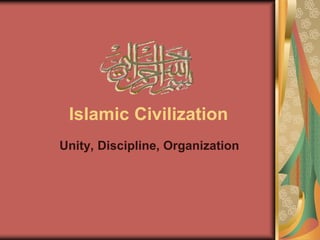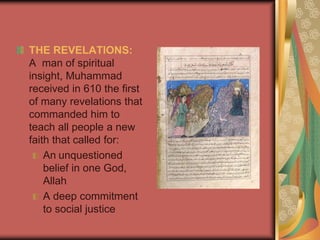The document summarizes the history and origins of Islamic civilization in Arabia before and during the rise of Islam under the prophet Muhammad. It describes how: (1) Before Muhammad, Arabia was inhabited by nomadic tribes without strong political entities who followed pagan, Jewish, or Christian faiths; (2) Muhammad received revelations in 610 CE and taught monotheism, establishing the religion of Islam; (3) His followers rapidly expanded the new Islamic state across the Middle East and North Africa through military conquests. Islamic civilization entered a golden age under the Abbasid caliphs and advanced philosophy, science, and culture while transmitting knowledge to Europe. However, Islamic dominance declined by the 15th century with the rise of other empires.







































